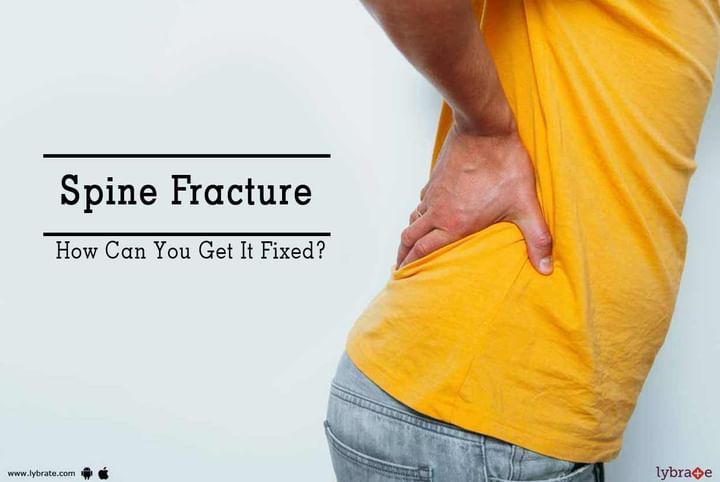Spine Fracture - How Can You Get It Fixed?
Spinal fractures occur as a result of an injury or dislocation of the bony vertebra. This causes the bone fragments to pinch and damage the spinal cord. Fractures can occur anywhere along the spine but the most common site of fracture is the lower back.
What causes spinal fractures?
Spinal fractures are often a result of the following-
• A sudden traumatic injury
• A high-velocity accident
• Falling from a height
• Sports injuries
• Spinal instability
• A whiplash
Types of spinal fractures:
Spinal fractures are classified into three categories, such as the following-
• Compression fracture - If you exert excessive pressure on the vertebra, it will break. This type of fracture occurs when the bones in the spine become fragile or weak to the extent that they easily crumble. People living with osteoporosis, certain types of cancer or tumours are prone to a compression fracture.
• Dislocation - When the discs and/or ligaments linking the vertebrae is torn or stretched, the bones may dislocate or come out of alignment.
• Fracture-dislocation - Torn ligament and broken bone lead to this condition. A fracture-dislocation is a debilitating condition and often requires surgical intervention.
Symptoms of spine fractures:
Following an accident or an injury, you can tell if you have ended up fracturing your spinal column by identifying these symptoms-
• Excruciating pain
• Tingling sensation
• Numbness
• Muscle spasm
• Swelling of the muscle
• Sudden onset of back pain
• Restricted spinal mobility
• The pain worsens if you walk or stand for long
• Deformity or disability of the spine
How are spinal fractures treated?
Spinal fracture treatment begins with administering pain-management drugs and medications to ease the symptoms, and stabilization methods to prevent injury. Depending on the nature of the fracture, your doctor may follow these lines of treatment-
• Fusion and instrumentation - These are surgical procedures to cure unstable fractures. Fusion refers to the joining of the vertebrae using a bone graft along with hardware such as hooks, rods, plates, or pedicle screws. The bone graft joins the vertebrae below and above to form a solid piece of bone.
• Kyphoplasty and vertebroplasty - These are minimally invasive procedures, wherein the surgeon injects bone cement into the fractured body through a needle. During kyphoplasty, the surgeon first inserts and inflates a balloon to expand the compressed vertebrae and then fills it with bone cement.
Spinal fractures are an extremely uncomfortable and painful condition to live with. It can hinder your day-to-day activities and affect your quality of life. It is imperative that you seek immediate treatment if you end up with fractures or dislocation of the spine.



+1.svg)
